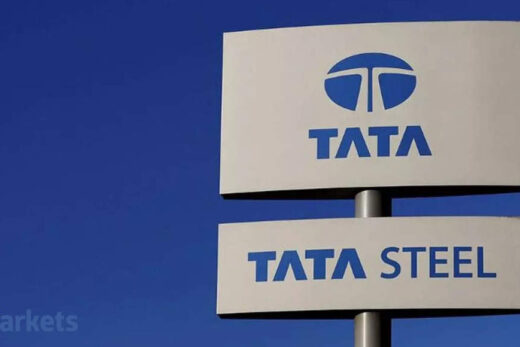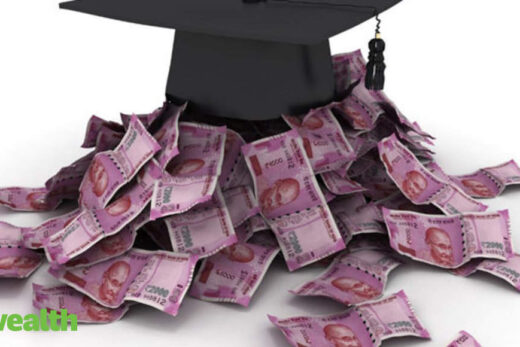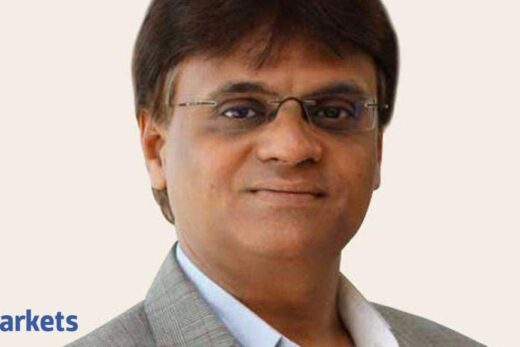Why is there a rapid fall in some of the ferrous metals? Iron ore, in particular, has had a 50% steep fall from record highs.
Iron ore has definitely played a very important role in overall reduction of the stock market. Internationally, iron ore was about $220 two months back and then there was steep fall. It came down about $140 but on the contrary, coking coal prices have firmed up, these are still at $225 to $230. It is unlikely that the prices will go down because other input costs like ferroalloys and the coking coal is still at its peak.
Steel has relatively stayed resilient as opposed to iron ore. In China, prices are still above $800 to a tonne despite the virus’ re-emergence. What is aiding this? Do you think this uptick in resilience that one can see in steel is here to stay?
Semi-finished steel’s prices are about $800 a tonne but whereas the finished material, that is hot rolled coil, specialty plates etc are still at about $1050 to $1080 a tonne so this is a good price as far as the overall steel scenario is concerned.
With a very low price of iron ore today at $130-$140, having prices of more than $1000 steel finished goods is a very good price. They are going to earn a lot of profits so metal market is going to be stable.
There is supply and there is demand and demand is strong. When do you think additional steel capacity will start kicking in from you and from the industry?
You are right, demand is strong and the overall IRR (internal rate of return) is better than the new investments and new capacities.
India has to reach to a level of about 300 million tonne by 2030, just nine years later, we may be producing about 300 million tonne steel and consuming same quantity. Overnight it is very difficult to build up capacities. Building up capacities takes about three to four years time for a small plant of about 3-5 million tonne. If you have to add facilities more than 3-5 million tonnes in a particular location, then the time consumed is about seven to eight years overall.
All steel mills whether it is JSPL or JSW or SAIL or or Arcelor Mittal, everybody is very bullish, everybody wants to invest in the country. A 2 lakh crore investment is likely to come in the next four to five years time which is a very healthy sign and the demand is also picking up. We feel that steel will definitely shine in times to come.
If iron ore prices have come down, why do you think finished steel prices will not come down?
Today the prices are holding only because of coking coal. Most of the steel used is through the blast furnace route in the country and the other is through the scrappage policy which has come.
The scrap availability as of now is very low. Electric car furnaces in the country are also very less in numbers. We have to put up more and more electric furnaces so that we can utilise and use the scrap which is going to be produced in India.
Unfortunately the energy cost is very high in the country. The prices are about Rs 10 to Rs 12 per unit which is a very high price. We consume about 600 units per tonne for steel making, so Rs 7200 to Rs 8000 is the energy cost which is very high, and is not viable in terms of producing steel.
I think Government of India will have to come out with a comprehensive policy with one tariff, one nation. The country should get power from Kashmir to Kanyakumari at Rs 5 per unit and only then will the electric car furnace would be viable in different parts of the country.
Steel demand will continue because infrastructure projects are in offing and there are lot many projects on the table now. The construction sector is booming and the ship building sector, defence sector, and the oxygen cryogenic plants are definitely increasing in terms of number.
Consumptions will be maintained but the prices can only be reduced if the coking coal prices come down from $220 to about say $120 or $130 a tonne.
What will be your pricing in terms of fixed contracts versus the spot market pricing? Last year if one followed the spot market, it was like a lottery. This year are you likely to take a risk of keeping your production open to the spot market?
Yes, we are still maintaining about 35% to 40% in the spot market. This spot market is still very remunerative. So if you see international spot market that is hovering around about $900 a tonne to $950 a tonne for the finished goods. For semi-finished goods, it is still about $680 to $700 a tonne depending on the size, grade and chemistry of the material and this is a very good price when compared with Indian prices.
Earlier it used to be about $200 to $250 a tonne or difference in domestic and the spot international prices but now it is about $100 a tonne. So still it is good to export. So we are exporting about 35% to 40% of the total steel total produce in our company and I think my peer group are also maintaining about more than 30% of the total sales that goes to spot market in the international markets.
What is keeping coking coal elevated, what is the supply situation? I think it is at $250 or $260 per tonne. This is the highest ever. It continues to stay over there despite the whole rout that we saw across commodities. What do you think is keeping coking coal, ferroalloys at that higher level?
The Chinese steel industry plays a very significant and vital role in maintaining, reducing or increasing prices. They produce 1,050 million tonne of steel which is a very huge quantity because they are doing about 60% to 65% of the total steel production in the world. So whenever they change policies, that impacts the whole world.
Hundreds of vessels are waiting in the south China sea because of the COVID situation or because of the current circumstances. You are seeing silicon chips not being available, so the downstream industry in India or anywhere in the world it is affected very adversely. Similarly with coking coal. The Chinese stopped buying coking coal from Australia and they started buying it from Russia,Venezuela, Colombia and South Africa and also from the US.
The Indian Ocean is now full of vessels having coking coal from America, Russia, South Africa, Colombia. We are importing coking coal from Australia so it is a crisscross movement of the vessels so that has also played a very adverse impact on the overall prices in terms of the shipping cost. Shipping cost has increased. The daily demurrage cost has gone up four to five times. It used to about $8000 to $10,000 a day, now it is $30,000 to $40,000 a day. In some of the cases it is more, even as high as $60,000.
We have to see that what the right way is and for a country like India, the only solution is that we should use our coal, which is called swadeshi coal. We can also reduce the carbon footprint by at least 60% if we utilise Indian coal and convert into gas that is syngas. Syngas to DRI and DRI to electric arc furnaces. I think that is the answer.
So in the next 20 to 30 years time we should be in a position to use maximum Indian coal which is very environmentally friendly if it is gasified, otherwise we will keep seeing such kind of ripples in times to come.
China’s exports have reduced considerably and the output is going to be a little on the lower side. So exports will continue to be low for the rest of the year. How well do you think Indian steel mills have captured the gap left by the Chinese?
Due to internal Chinese policies, they have reduced production from the mills which are generating relatively more CO2. While their total overall consumption will not reduce, they used to export about 100 million tons, now they will export only 10 to 20 million tons just to maintain presence.
There is a big potential existing in India because we are the nearest steel producer to China. Our vessels reach in time. We have bridged the gap in terms of exporting material to the customers of China as we are exporting most of our goods to Southeast Asia, which includes Philippines, Indonesia, Malaysia and Thailand and also Australia and part of the products we are selling into Middle East that is Saudi Arabia, UAE, Qatar, Oman, Bahrain, Kuwait.
So for Indian steel producers it is a very good time. We can maintain a perfect balance between exports and imports. We can make it perfect balance in the spot markets in the domestic market, we can still maintain a very good price for the exports and we can also maintain a concessional price for the domestic market so that our domestic consumers, MSMEs and other OEMs they do not suffer for the want of steel.



